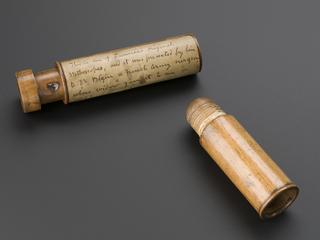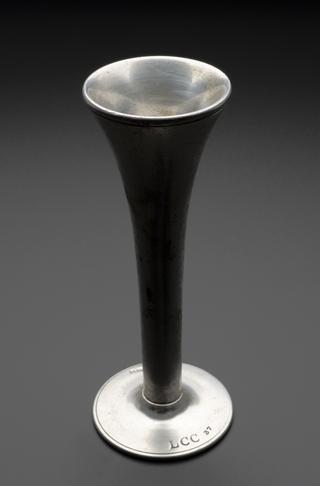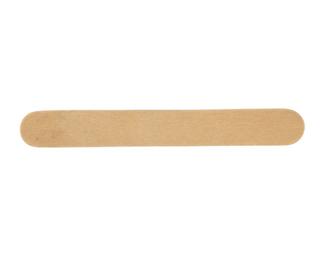
Spatula used for dry smear test
- PART OF:
- 'Dry' smear test kit
- Made:
- 1960-2003 in United Kingdom
Spatula far of dry smear test, part of a kit branded CerviKit by Cellpath. Similar kits for conventional (dry) smear tests were used in hospitals until 2003
The Cellpath Cervikit contains everything needed to carry out a ‘dry’ cervical test sometimes known as a Pap smear, after its developer by Dr Georges Papanicolaou (1833-1962). Samples were taken with a wood spatula and the sample smeared onto a glass slide which was then sent to the lab for examination. When cervical screening was launched in the 1960s in England, many of the technicians in the laboratories were women with families. Labs offered part time hours which could be fitted around home commitments or allowed people to pursue their scientific interests. Technicians or cytoscreeners as they were known were looking through a microscope for ‘abnormal’ cells.
With this method, there was a high occurrence of slides that could not be screened. This meant that people either had to return for another test, were not called back or decided not to return, falling out of the screening programme altogether. Kits like these were used in the United Kingdom from the 1960s when screening was launched until the development of liquid based cytology (LBC) tests in the early 2000s. They were fully phased out by 2008.
Since 2016, cervical screening in England is used to detect HPV (human papillomavirus). Almost all cases of cervical cancer are caused by high-risk HPV. For a small number of people, their immune system will not be able to get rid of high-risk HPV. If left unmonitored or untreated the virus may cause cervical cancer.
Details
- Category:
- Clinical Diagnosis
- Object Number:
- 2019-36/13
- Materials:
- wood (unidentified)
- Measurements:
-
overall: 1 mm x 205 mm x 20 mm,
- type:
- spatula
- credit:
- Gift of London Regional Cytology Training Centre




